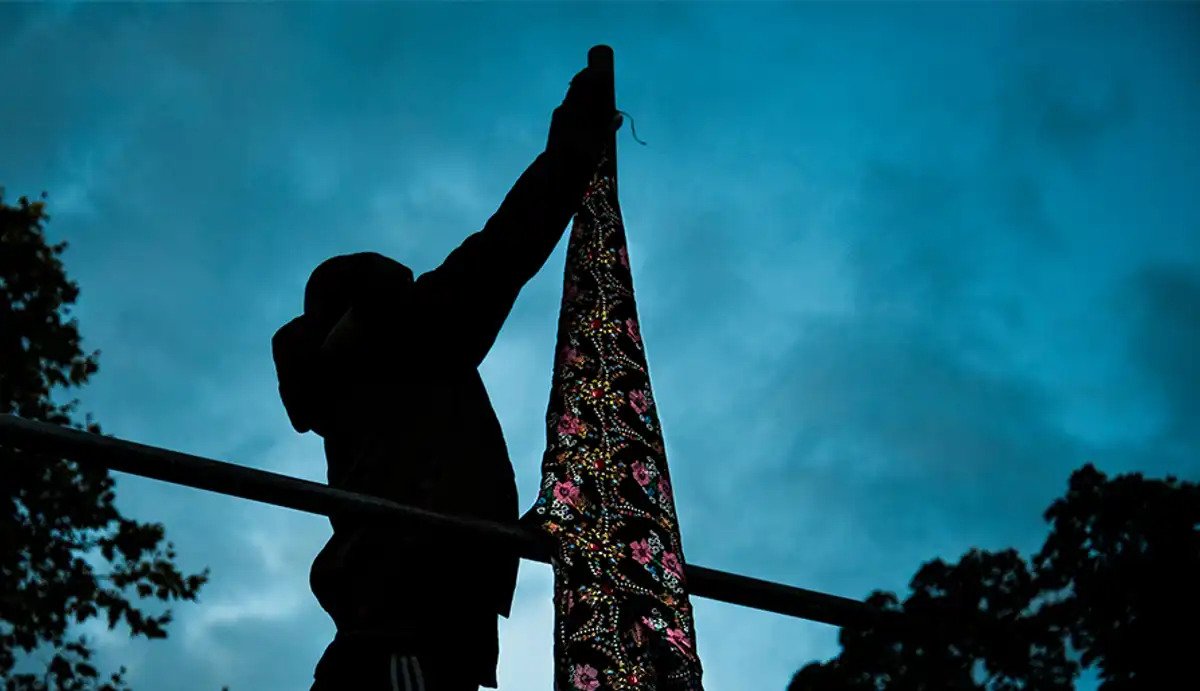Exit Brixton station, turn left, and walk 3 minutes up to St Matthew’s Church Gardens. There you will find the Rebel Pavilion, a temporary multi-purpose space, hosting events, talks and exhibitions for the local community for a week (until the 25th of September). The pavilion has been commissioned by the Brixton Design Trail as part of the London Design Festival, an annual event held to celebrate and promote London as the design capital of the world and as the gateway to the international creative community.
Skin Deep had a chat with Akil Scafe-Smith and Gameli Ladzekpo, founders of the design collective Resolve, who are behind the Rebel Pavilion.
*
Skin Deep: Why did you decide to build the Rebel Pavilion in Brixton?
Akil Scafe-Smith: We had just finished uni, and [Gam and I] were looking for some way of collaborating. We knew the Brixton Design Trail was happening, and we thought it would be a good opportunity. I live down the road and have a long family history in Brixton, which was another plus.
Gameli Ladzekpo: Akil and I had been talking about informal versus formal structures, and about the different cultures and ethnicities that are found in Brixton – Caribbeans, Ghanaians, etc. When building structures in the different parts of the world that these communities came from, they use whatever local materials they can find. We wanted to borrow that same methodology from those cultures to build this structure, using whatever materials we could find around Brixton.
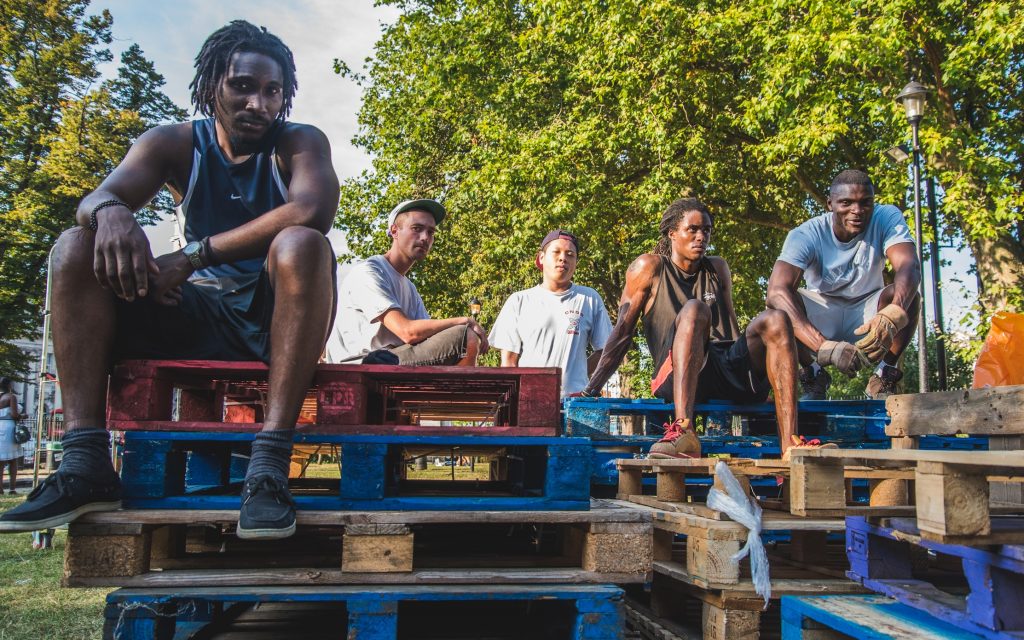
We called it the Rebel Pavilion because we wanted it to be a place where people can come and talk about ‘extreme’ ideas. We’ve invited thought-leaders to talk about their most rebellious ideas. The space you’re in affects how you feel and what you feel comfortable sharing. If you have a space like this, you might get real open conversation, which is both creative and radical. We want the space to be constructive for the community, both physically and mentally.
ASS: We want people to re-think and re-solve, to reconsider their preconceptions.
GL: The Rebel Pavilion is an evolving space where every person has a different experience.
SD: What are the materials that you’ve used?
ASS: We sourced pallets from the immediate area, from the market, Tesco, builders yards, and the scaffolding has been loaned to us by a guy called Lee – shout out to Lee Scaffolding – who came through for us. It reflects our level of experience. We couldn’t build the Millennium Dome, you know. But this is a testament to the whole methodology behind scarcity architecture. You have to build and innovate using what’s available to you.
GL: In London, housing structures are so formal. The height of rebellion would be to do the absolute antithesis of that: to create something informal.
ASS: The first idea Gam had for the space was to build a shack in the middle of Brixton, like the vendors you get on the side of the road in Jamaica. It would be a very informal space in the middle of a very formal city. From the outside, approaching the shack, you would have an unfamiliar experience and you wouldn’t be exactly sure of what to make of it. And then as you enter it, it would become something more familiar – an art exhibition or a talk. I think we’ve managed to create that transitional feeling in the Rebel Pavilion – a sort of liminal space.
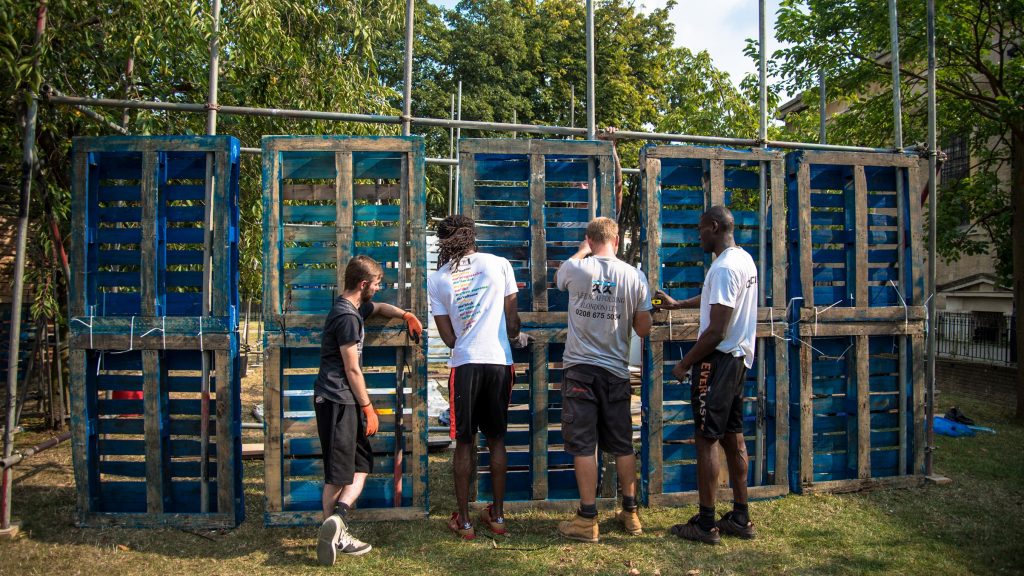
SD: Our use of public space typically conforms to a normative idea of social time. Public spaces close and open to accommodate the person with the 9.00 am – 5.00 pm job. The Rebel Pavilion, true to its name, has chosen to operate both within and outside of normative social time – the space will be open for 24 hours for 7 days – making it accessible to shift workers, insomniacs and anyone that might need a place to sleep. What was the thinking behind having the pavilion be accessible 24/7?
ASS: There were 2 reasons behind this thinking. You have to pay an arm and a leg just to sit down somewhere nowadays. For instance, Gam just had to buy a coffee to sit in Starbucks to get wifi. You have to kill your firstborn son to get a free meal around here. People need a place that’s just cool, where they can sit and chill.
GL: The space isn’t fully open or closed.
ASS: The panels are closed to protect the pavilion from the weather, but they can all twist to open out.
SD: Which allows you to wander in and through the pavilion.
ASS: Yes! It’s about permeability!
GL: But it’s not as simple as calling it ‘open’ or ‘closed.’ It’s about degrees of openness.
ASS: Another reason behind the 24/7 thinking is the location – St Matthew’s Church Gardens is notorious for its homeless population. There are no gates to this park, so my man can come sit and do his thing at any time. This park will seem closed off to many people because most won’t think of it as a public space. They don’t want to be in this park. In the same way, the Champagne and Oyster bar in Pop Brixton doesn’t seem like a place for people from this park. There would be nothing we could really do to stop people getting into the pavilion. So we had to embrace it. We had no intention of trying to close it off.
SD: You’ve managed to disrupt a space in a way that doesn’t disrupt it for those from the local community that use this space on the regular.
GL: Yeah, exactly.
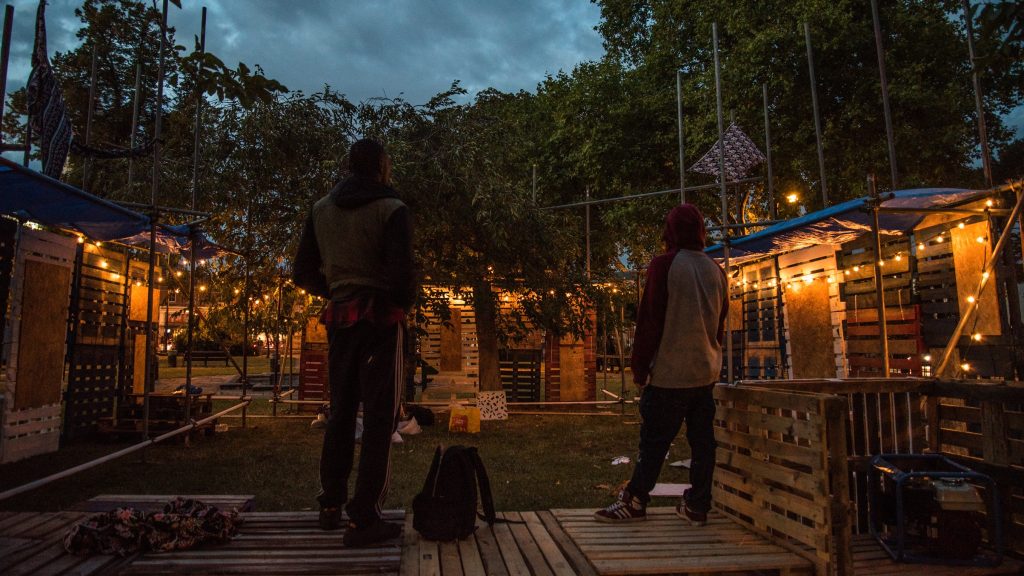
SD: The talks at the pavilion on Tuesday were titled ‘Refuge, The Subaltern & Urban Space’, the aim of which was to explore the role that ‘subalterns’ have in redefining urban space and how they in turn are impacted by the spaces themselves. Whom are you defining as ‘subaltern’ and what are you hoping to achieve by having these conversations about the role of these groups in urban planning?
ASS: I know subaltern has postcolonial connotations, but we’ve taken it to mean ‘the marginalised’ in this context. We wanted all the talks to be as open as possible. On Monday the talks were titled ‘Diaspora & the Return.’ People responded to this with their own ideas of diaspora and the return.
GL: When we were thinking about how the Rebel Pavilion was going to be used, we wanted it to be a space where ‘no ideas are barred.’ It looks like a den. You imagine a couple of mates trying to build a nation. This may sound really corny, but you come into this space and you’re under the tarpaulin, you can hear the rain and see the lights, with people huddled round a stall. It feels like a ‘rebel space.’
ASS: You’re huddled round listening to poetry or to people talking about their experiences in the 60s in Brixton.
GL: The ‘rebel space’ is a physical thing, but it’s also a mental space.
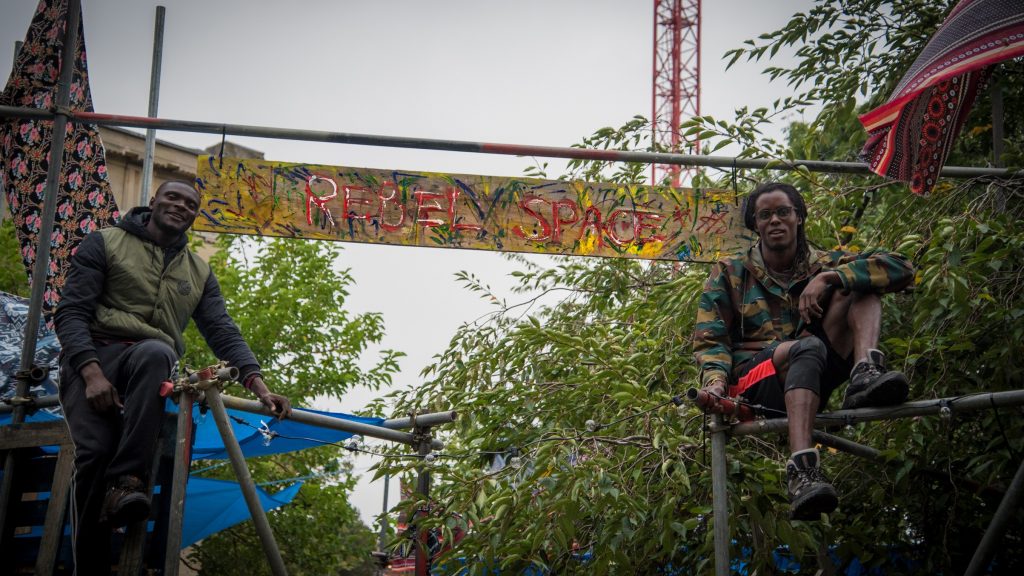
SD: What events and conversations can people expect to see/be part of over the next few days?
ASS: Tomorrow is ‘Young People’s Day,’ for those young people who were involved in the Resolve X UCL Engineering workshop to help design the pavilion. They get to see and interact with the product of their work. Thursday is ‘Women, Diversity & Space,’ curated by Sujitha Suvaraja. It’s all going to be good, man!
SD: What has the response from the local community been?
ASS: The St Matthew’s Church crew have loved it. They’ve been coming through, chatting to us about the space. They’re feeling the vibe. And I think they feel it a lot more at night when people have gone and they can do their thing.
GL: I think the peopledem are feeling it.
ASS: The footfall is high, but it’s a shame people don’t stay unless it’s an event. We’re trying to get more seating at the moment, which would mean people could sit and chill a bit more.
SD: Is the Rebel Pavillion something that will become an annual project or is it just a one time thing?
GL: We’ll definitely produce something for Brixton Design Trail next year.
ASS: We might try and move the pavilion somewhere else in London, or maybe somewhere else in the world. It might not take the same form. In Morden it wouldn’t look the same as it does in Brixton.
SD: Especially if you continue with this method of using local materials, then it can’t really look the same in different locations. It’s the idea of the Rebel Pavilion that travels.
Speaking of future ideas, what is the next project in the pipeline for Resolve?
GL: Skin Deep X Resolve.
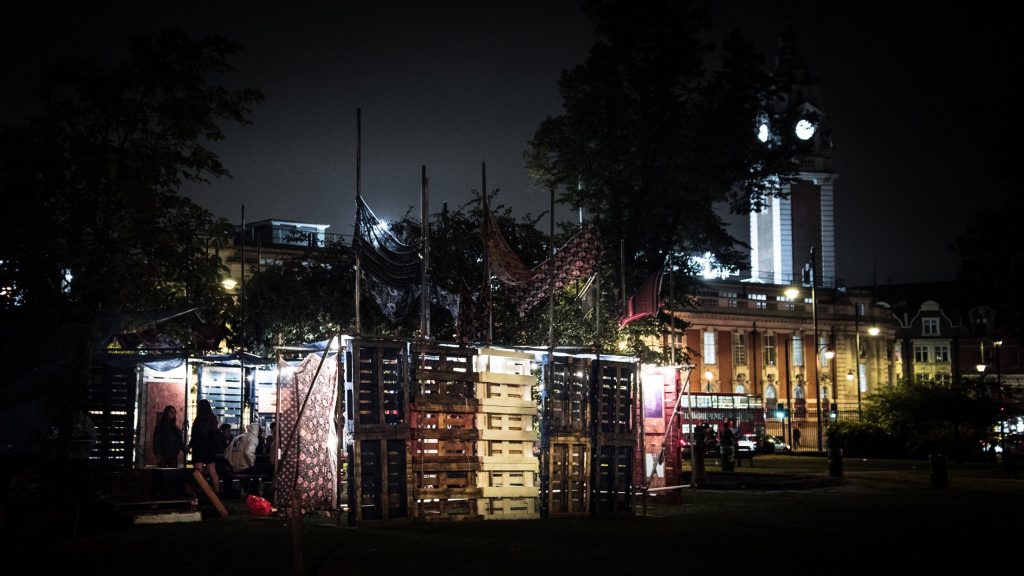
The Rebel Pavilion will be up until the 25th of September. Go for a wander throughout the day, spy the exhibition, and then settle in for talks, music and workshops in the evenings. Take a look at the full lineup here.
All images were kindly provided by Vishnu Jay.
